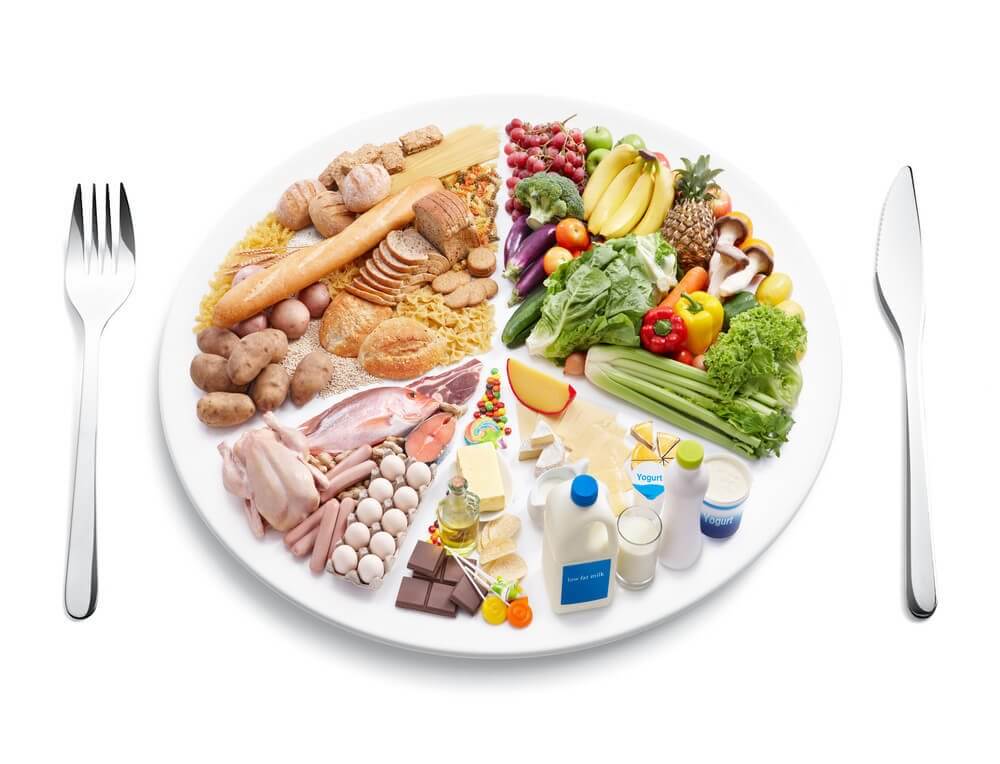Celiac Disease: Everything You Need to Know

Understanding celiac disease is the best strategy to avoid its symptoms. In this article, we’ll talk about everything you need to know about it.
What is celiac disease?
Some individuals have a genetic predisposition to changes in their autoimmune system. This can be caused by gluten, also known as celiac disease.
What is gluten and why is it bad for some people?
Gluten is a complex protein made of prolamins. It’s found in cereals like wheat, barley, or rye. Oats can affect some people too, but it doesn’t have this protein.
Prolamins, or fragments of gluten, are divided into gliadin and glutenin and cause celiac disease. A bad reaction occurs when the immune system of celiac people detect these substances. It creates an inflammatory reaction that harms the villi on the intestinal walls.
This means the nutrients can’t be absorbed properly, with possible clinical and functional impacts. However, it depends on the age and pathophysiologic condition of each person.

At what age does celiac disease appear?
Celiac disease can happen at any age and it’s a lifelong condition. Regarding the age of diagnosis, there are two peaks with a higher number of cases: in children between 1 and 3 years old, and adults between 30 and 50 years old.
What are the clinical aspects of celiac disease?
Depending on the patient’s age, the clinical aspects of celiac disease can vary. Here’s a chart that shows the main symptoms and signs that can be seen according to different age groups:
| CHILDREN |
TEENS |
| SYMPTOMS |
| Diarrhea | Often without symptoms |
| Anorexia | Abdominal pain |
| Vomits | Headache |
| Abdominal pain | Arthralgia |
| Irritability | Delay in menarche |
| Apathy | Menstrual irregularities |
| Introversion | Constipation |
| Sadness | Irregular bowel movements |
| SIGNS OF ILLNESS |
| Malnutrition | Canker sores |
| Bloating | Dental enamel hypoplasia |
| Hypotrophy | Bloating |
| Weight-Height delayed development | Muscle weakness |
| Iron deficiency anemia | Short height |
| Arthritis | |
| Follicular keratosis | |
| Iron deficiency anemia |
How to treat celiac disease?
To live a life without displays of this pathology, the only effective treatment, so far, is to have a gluten-free diet.
With a balanced diet that doesn’t include this protein, you can improve these symptoms two weeks into this diet. Likewise, after two years of dieting like this, there’s the possibility to recover your intestinal villi.
A good outlook that comes from detecting the disease early on is that, usually, children can accept, adapt and comply with the diet, better than teens and adults, but only if their parents help them do so.
That’s why it’s worth emphasizing the value that good eating habits have in children, especially in those who have food-related pathologies.

Nutritional recommendations
Next we’ll see some basic nutritional recommendations for children with celiac disease.
- Don’t eat products made with grains that contain gluten like wheat, rye, or barley.
- Pay attention to processed foods. Many of the ultra-processed foods can include flour or other ingredients that contain gluten, although it might not seem like it. The best thing to do is avoid them altogether.
- Always read the labels carefully.
- When you cook, avoid cross-contamination. Don’t use the same cooking utensils that have been used to prepare food with gluten. Don’t use the same cooking oil, etc.

- In restaurants, make sure they have gluten-free dishes and that they follow the right hygienic standards to avoid cross-contamination.
- Try to find alternatives to the usual cereals. For example, try amaranth, quinoa, corn, millet, sorghum, and buckwheat.
- If you’re lactose intolerant too, try to eat dairy products without lactose.
- Make sure you get the right amount of vitamins and minerals by eating fruits, vegetables, and legumes.
In short, it’s worth noting the importance of going to a specialist in celiac disease, so this won’t become an obstacle for your child’s development, neither physical nor social.
Understanding celiac disease is the best strategy to avoid its symptoms. In this article, we’ll talk about everything you need to know about it.
What is celiac disease?
Some individuals have a genetic predisposition to changes in their autoimmune system. This can be caused by gluten, also known as celiac disease.
What is gluten and why is it bad for some people?
Gluten is a complex protein made of prolamins. It’s found in cereals like wheat, barley, or rye. Oats can affect some people too, but it doesn’t have this protein.
Prolamins, or fragments of gluten, are divided into gliadin and glutenin and cause celiac disease. A bad reaction occurs when the immune system of celiac people detect these substances. It creates an inflammatory reaction that harms the villi on the intestinal walls.
This means the nutrients can’t be absorbed properly, with possible clinical and functional impacts. However, it depends on the age and pathophysiologic condition of each person.

At what age does celiac disease appear?
Celiac disease can happen at any age and it’s a lifelong condition. Regarding the age of diagnosis, there are two peaks with a higher number of cases: in children between 1 and 3 years old, and adults between 30 and 50 years old.
What are the clinical aspects of celiac disease?
Depending on the patient’s age, the clinical aspects of celiac disease can vary. Here’s a chart that shows the main symptoms and signs that can be seen according to different age groups:
| CHILDREN |
TEENS |
| SYMPTOMS |
| Diarrhea | Often without symptoms |
| Anorexia | Abdominal pain |
| Vomits | Headache |
| Abdominal pain | Arthralgia |
| Irritability | Delay in menarche |
| Apathy | Menstrual irregularities |
| Introversion | Constipation |
| Sadness | Irregular bowel movements |
| SIGNS OF ILLNESS |
| Malnutrition | Canker sores |
| Bloating | Dental enamel hypoplasia |
| Hypotrophy | Bloating |
| Weight-Height delayed development | Muscle weakness |
| Iron deficiency anemia | Short height |
| Arthritis | |
| Follicular keratosis | |
| Iron deficiency anemia |
How to treat celiac disease?
To live a life without displays of this pathology, the only effective treatment, so far, is to have a gluten-free diet.
With a balanced diet that doesn’t include this protein, you can improve these symptoms two weeks into this diet. Likewise, after two years of dieting like this, there’s the possibility to recover your intestinal villi.
A good outlook that comes from detecting the disease early on is that, usually, children can accept, adapt and comply with the diet, better than teens and adults, but only if their parents help them do so.
That’s why it’s worth emphasizing the value that good eating habits have in children, especially in those who have food-related pathologies.

Nutritional recommendations
Next we’ll see some basic nutritional recommendations for children with celiac disease.
- Don’t eat products made with grains that contain gluten like wheat, rye, or barley.
- Pay attention to processed foods. Many of the ultra-processed foods can include flour or other ingredients that contain gluten, although it might not seem like it. The best thing to do is avoid them altogether.
- Always read the labels carefully.
- When you cook, avoid cross-contamination. Don’t use the same cooking utensils that have been used to prepare food with gluten. Don’t use the same cooking oil, etc.

- In restaurants, make sure they have gluten-free dishes and that they follow the right hygienic standards to avoid cross-contamination.
- Try to find alternatives to the usual cereals. For example, try amaranth, quinoa, corn, millet, sorghum, and buckwheat.
- If you’re lactose intolerant too, try to eat dairy products without lactose.
- Make sure you get the right amount of vitamins and minerals by eating fruits, vegetables, and legumes.
In short, it’s worth noting the importance of going to a specialist in celiac disease, so this won’t become an obstacle for your child’s development, neither physical nor social.
All cited sources were thoroughly reviewed by our team to ensure their quality, reliability, currency, and validity. The bibliography of this article was considered reliable and of academic or scientific accuracy.
- Polanco I. (2015). Actualización en enfermedad celíaca: diagnóstico y actuación clínica y dietética. Nutrición Clínica en Medicina.
- Rodríguez L. (2010). Enfermedad celiaca. IT Sist Nac Salud. 2 (34): 49-59
- Catassi C. (2018). El mapamundi de la enfermedad celíaca [Internet]. Drschaer-institute.com.
- Polanco I, Ribes C. Enfermedad Celiaca. (2010). In Acuña MD, Franch M, Calvo C, Bedate P, Medina E. Protocolos diagnóstico-terapéuticos de Gastroenterología, Hepatología y Nutrición Pediátrica. Madrid: Ergón; 2010. p. 37-46.
This text is provided for informational purposes only and does not replace consultation with a professional. If in doubt, consult your specialist.








